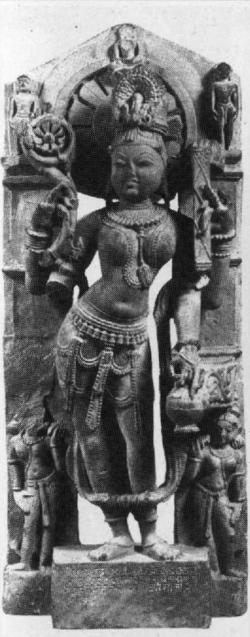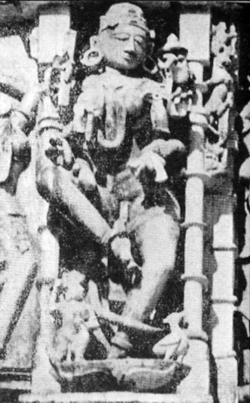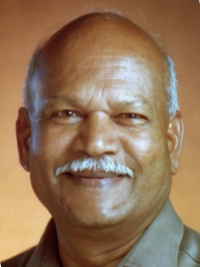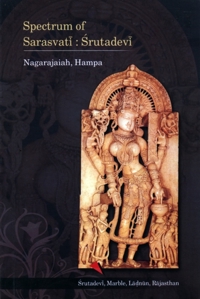 |
| 64 |
 |
| [65] Tārangā, 12th Century |
The most important departure of the southern from the northern is of pāśa and aṅkuśa, always held in the two upper arms, which, however, correspond fairly well with other southern images. In the north, Sarasvatī holds kamaṇḍalu, 'water vase', (symbolizing her as River Goddess) in one of her hands and in the south kamaṇḍala is conspicuous by its absence. Let me illustrate this with two more images - one from Madhya Pradesh and the other from Gujarat, which are dated 1061 and 1153 CE respectively. Pratapaditya Pal (1994: 172) has discussed the iconographic details of these two inscribed images standing in the classic flexed posture.
The sandstone image from Madhya Pradesh was commissioned by Rāmaṇa and Vāhada, the sons of Avasaṇa at the illustrious Sāṁvavihāra of the family of the illustrious Ācārya Pra... (name is lost). Her upper right hand holds a lotus stalk which terminates in a blossom, upper left hand caries a manuscript, and lower left hand holds Kamaṇḍalu, 'ascetic's water pot'. Her lower right arm is broken.
Two female attendants bearing flywhisks are in the flank. Diminutive figures of three Jina's grace the summit of the image.
The four armed image from Gujarat, made from white marble, now in the Los Angeles Country Museum of Art, is dated 1153 CE. The lotus stalk, held in the two upper hands, encircles a pair of pecking geese, and the upper left hand carries a rosary. Both of her lower hands are mutilated. Flanked by flywhisk bearing attendants, at thigh level are two small figures with musical instruments that allude to Sarasvatī's cultural role as the preceptress of music [Pal 172]. This graceful image 'was carved by artist Jagadeva in April-May 1153 CE by order of the officer Paraśurāma as a replacement for a sculpture of Sarasvatī that was damaged the year before, i.e., 1152'. [supra].
The Nāṭya Sarasvatī, concept and sculptures, is found exclusively in Karnataka and as such it is an unique contribution of the Hoysaḷa sculptors. Plausibly, the only exception of nāṭya Sarasvatī (Śrutadevī) comes from. Tārangā (Gujarat) temple, where eight-armed deity stands on a full-blown lotus with her right foot raised. I've copiously illustrated the monograph to show the similarities and differences.
 Prof. Dr. Nagarajaiah Hampana
Prof. Dr. Nagarajaiah Hampana
